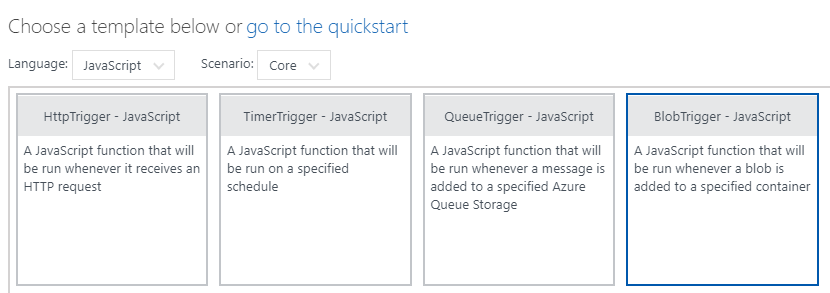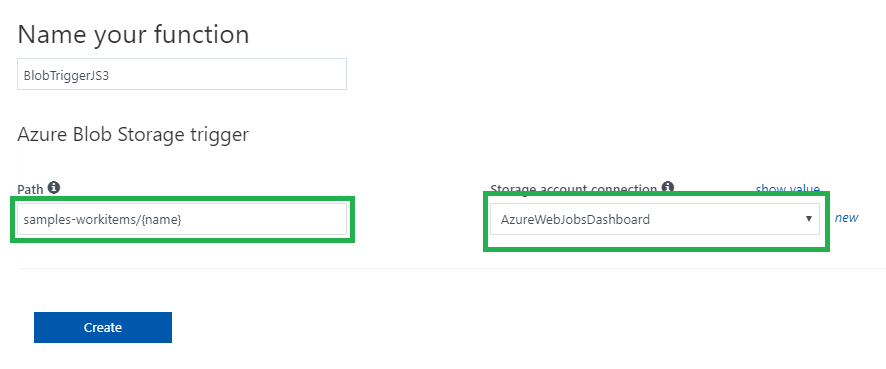Storage
Storage can be used as input or output or both as a binding for the Azure Function.
For example, consider a scenario where the Azure Function takes images as input from the blob storage and creates a thumbnail of images and saves it again in the blob storage.
In this scenario, we need blob storage to be bound as input and output.
The following are the advantages of using storage as input binding with the Azure Function:
- It allows us to take data from the storage and start processing
- Whenever data is uploaded to the storage, a trigger gets fired and the Azure Function gets executed
The following are the advantages of using storage as output binding with the Azure Function:
- It allows us to upload data to the storage after processing
Example
In this section, we will create an Azure Function with Blob storage trigger.
- Create the Azure Function with Blob storage trigger:

- Configure the storage path and connection, as shown in the following screenshot:

- Write the following code in the Azure Function...




































































